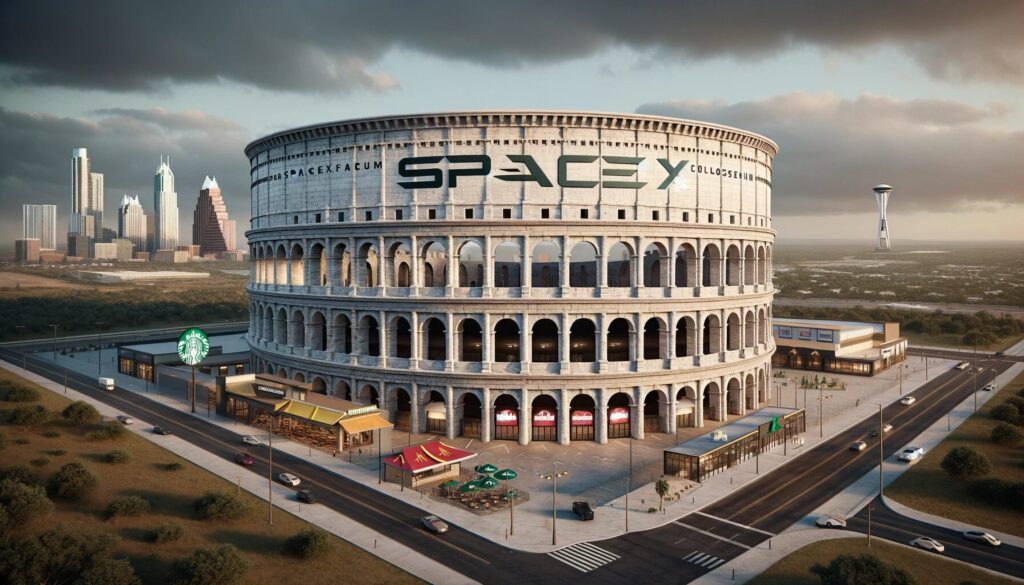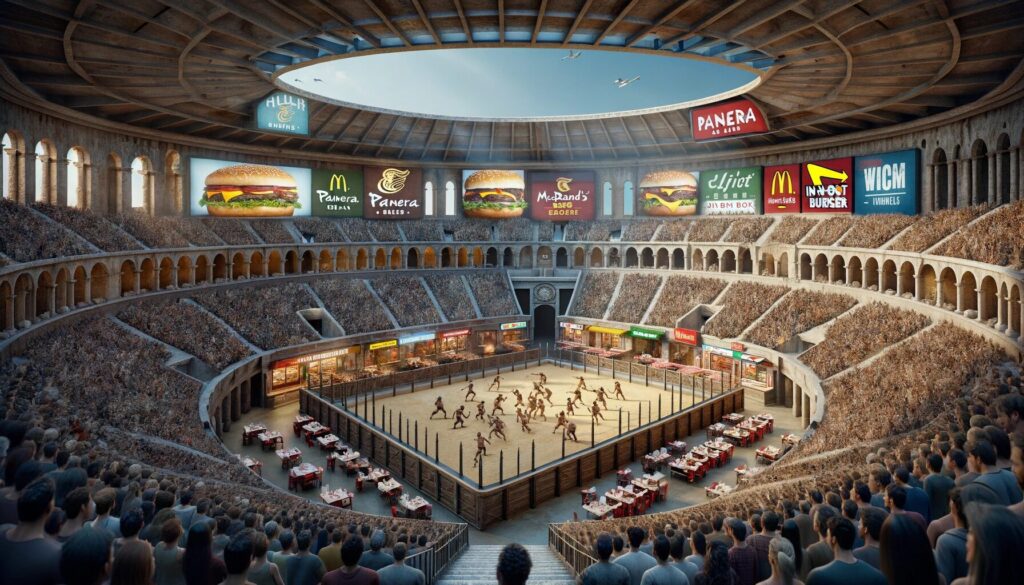Austin, TX — Billionaire entrepreneur Elon Musk has set his sights on the Roman Colosseum, proposing dismantling and reconstructing it in Texas. This plan parallels the 1968 purchase of London Bridge by American entrepreneur Robert P. McCulloch, who famously relocated the iconic structure to Lake Havasu City, Arizona. McCulloch’s venture, which involved meticulously dismantling the bridge and shipping each marked stone to be reassembled in the U.S., stands as a precedent for Musk’s even more ambitious project.
Musk, known for his groundbreaking ventures with SpaceX and Tesla, views this endeavor as a blend of historical preservation and modern innovation.
“It’s about merging the past with the future, pushing the boundaries of what’s possible,” Musk elaborated with his typical blend of technical jargon and lofty ideals. “Just as we’re pioneering life on Mars to ensure humanity’s future, transporting the Colosseum to Texas symbolizes the renaissance of ancient marvels through modern technology. It’s akin to sending a Tesla Roadster into space – a gesture that interweaves human achievements across time and space.”
But Musk didn’t stop there.

“We’re not just relocating a structure; we’re transcending historical epochs. This project will be a testament to human ingenuity, much like our Martian colonies will be. Imagine sipping a latte in a Starbucks nestled within these ancient Roman walls or shopping in a mall where gladiators once battled. It’s about creating a confluence of eras, a fusion of times and cultures, that both preserves our heritage and propels it into a new era of innovation.”
Location, Location, Location
Elon Musk’s vision to transplant the Roman Colosseum extends beyond merely relocating an ancient artifact; it involves a strategic placement that resonates with his futuristic aspirations. He has earmarked Austin, Texas – the burgeoning tech hub and the site of Tesla’s new Gigafactory – as the ideal location for this historical marvel. Austin, known for its dynamic blend of technology, culture, and arts, aligns perfectly with Musk’s ethos of marrying the past with the future. The idea is to create a tourist attraction and establish the Colosseum as a cultural and historical nexus amidst the backdrop of cutting-edge innovation.
According to Musk spokesperson Bethany Millbright, “Situating the Colosseum near the Gigafactory in Austin makes a profound statement about the fusion of ancient grandeur with modern technology. This placement is symbolically significant, reflecting the convergence of old-world history and new-age advancements, and is logistically practical. It facilitates seamless coordination between the various teams working on the Gigafactory and the Colosseum. It embodies Musk’s vision of a harmonious blend of his ventures and positions Austin as a unique intersection where history and future innovatively coalesce.”
“It’s a Win-Win?”
An Italian official, closely tied to the negotiations yet preferring to remain unnamed, hinted at the financial allure underpinning the deal.
“It’s a win-win,” the official asserted. “We not only get to preserve an essential piece of our history but also unlock significant funds for future cultural projects.”
The subtext of the official’s words hinted at a deeper, more mercenary motive. “Think about it,” she continued, “This isn’t just about saving an ancient relic from decay. It’s about capitalizing on its value in the global market. With someone like Musk involved, we’re talking about a major influx of capital. This could redefine how we handle our cultural assets.”
The proposal has divided opinions in Italy. Some see it as a desecration of their heritage, while others are more pragmatic, acknowledging the financial benefits. “It’s our soul, our history. How can we sell it?” lamented Francesca Romana, a Roman historian.
In contrast, a local businessman, Giovanni De Luca, argues, “It’s a smart move. The Colosseum is crumbling. Better to preserve it elsewhere and benefit from it financially.”
In the U.S., reactions are strikingly varied, often reflecting a uniquely American perspective that blends commercial enthusiasm with a casual approach to historical authenticity. Many Americans are thrilled about the prospect of experiencing a piece of ancient Rome without leaving the country.
“I’ve never been to Italy, but having the Colosseum in Texas? Now that’s something I’d visit. It’s like history, but more accessible, more American,” said Emily Johnson, a Dallas resident.”Maybe Musk could add a giant cowboy hat or a rodeo ring inside to give it that Texan flair. You know, blend the old Roman culture with our own. Wouldn’t that be something?”

This attitude, while drawing some criticism for its apparent disregard for historical integrity, highlights a broader trend in the American cultural landscape – one where convenience and entertainment often take precedence over authenticity. Whether in jest or earnest, the idea of ‘Americanizing’ the Colosseum speaks to a larger conversation about commercializing cultural heritage and the sometimes-boorish American approach to foreign histories.
Musk’s plan also includes a twist on the Colosseum’s original purpose. He proposes hosting ‘modern gladiator games’ featuring drone battles and robot duels.
“Imagine the past meeting the future – ancient Rome’s spirit, revived with cutting-edge technology,” Musk continued.
Critics, however, are wary.
“This is cultural appropriation on a grand scale,” argues Professor Maria Gonzalez from the University of Houston. “It’s one thing to admire history; it’s another to uproot and commodify it.”
Staggering Costs
The financial magnitude of Musk’s Colosseum project is staggering. Preliminary estimates suggest the cost could run into the billions, with a significant portion allocated to the ancient edifice’s meticulous dismantling, transportation, and reconstruction. Each stone of the Colosseum would need to be carefully cataloged, removed, and shipped across the Atlantic – a logistical and financial endeavor of unprecedented scale. Moreover, the construction in Texas would require a blend of traditional techniques and modern technology to rebuild the structure while preserving its historical integrity.
Musk has hinted at the possibility of renaming the Colosseum to incorporate a corporate sponsor, following the trend of modern sports arenas. Ideas being floated include “The Tesla Arena,” an obvious nod to one of Musk’s other ventures, or even more whimsically, “The SpaceX Colosseum.” Such a renaming would help finance the colossal project and mark a new era of corporate involvement in historical preservation – or historical rebranding, depending on one’s perspective.
While still in its early stages, this bold proposal continues to generate excitement, skepticism, and outright disbelief. Whether it comes to fruition or remains a thought experiment in cultural and commercial audacity, it undoubtedly sparks a global conversation about the value, ownership, and legacy of our world’s most treasured historical sites.


